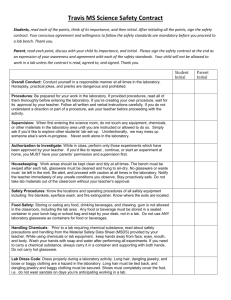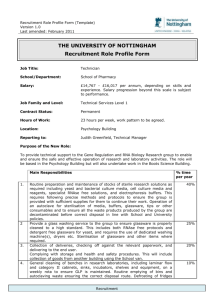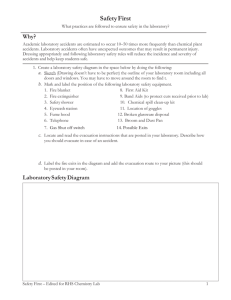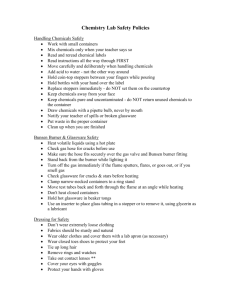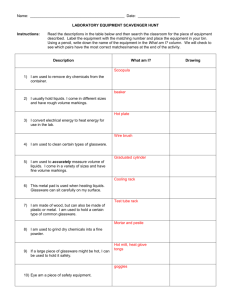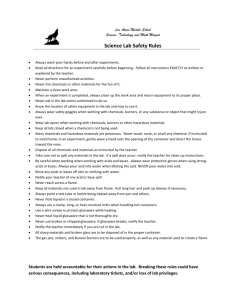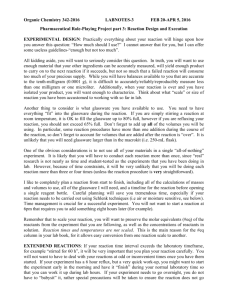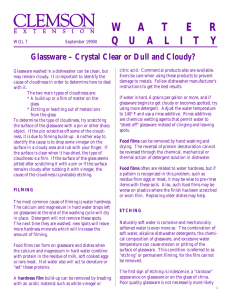equipment in the chemistry laboratory
advertisement
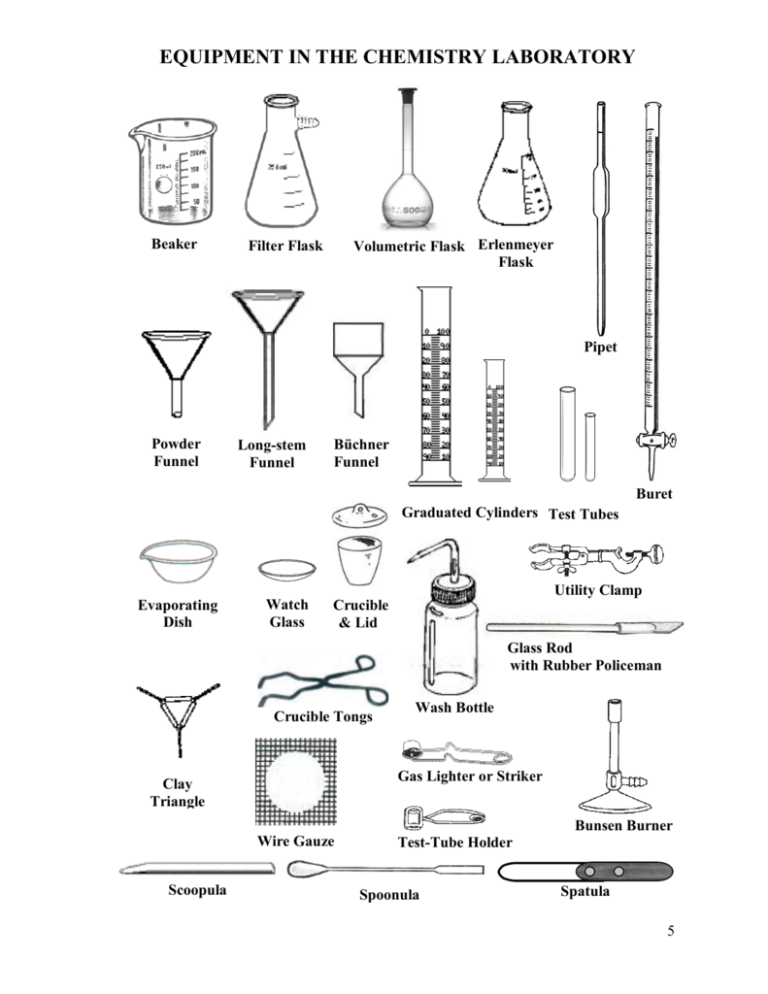
EQUIPMENT IN THE CHEMISTRY LABORATORY Beaker Volumetric Flask Erlenmeyer Flask Filter Flask Pipet Powder Funnel Long-stem Funnel Büchner Funnel Buret Graduated Cylinders Test Tubes Utility Clamp Evaporating Dish Watch Glass Crucible & Lid Glass Rod with Rubber Policeman Crucible Tongs Wash Bottle Gas Lighter or Striker Clay Triangle Bunsen Burner Wire Gauze Scoopula Test-Tube Holder Spoonula Spatula 5 6 EQUIPMENT IN THE CHEMISTRY LABORATORY GENERAL CARE OF GLASSWARE: Equipment you get from the side shelf is not guaranteed to be clean. You have to use good judgment as to whether it needs to be cleaned before use. Do not wash everything indiscriminately as there are experiments where the equipment cannot be wet. Consult with your instructor when in doubt. 1. Follow instructions on how to dispose of the contents of your glassware. Instructions are provided on the blackboard in the lab or in the write-up of the experiment. Many of the chemicals cannot go down the drain because of toxicity to humans and/or to the environment. FOLLOW INSTRUCTIONS! 2. Remove any labels that are on the glassware. Labels are much harder to remove if left on the glassware for a prolonged period. In experiments where the glassware is heated and weighed, any labels that are not removed will burn partially during the process and affect your data. 3. Most of the chemicals you use in this course is water soluble. After the chemicals have been disposed of properly as instructed, the general rule in cleaning the glassware is as follows: a. First wash it with hot tap water and a SMALL amount of detergent. Scrub the inside and outside of the glassware with the brushes provided by the sink. The detergent is provided in a plastic bottle with a pump at the top. DO NOT USE AN EXCESSIVE AMOUNT OF DETERGENT! You will have a hard time getting rid of the detergent, which will act as a contaminant next time you use the equipment. b. Next, rinse your glassware thoroughly with hot tap water to get rid of the detergent. c. When you are satisfied that the glassware is clean, rinse it 2 or 3 times with small amounts of deionized water provided at the sink. This will get rid of the salts that are in the tap water. Do not waste our deionized water by using excessive amounts. It is more efficient to rinse something several times with small amounts than to rinse it one time with a large amount. d. Allow the water inside the glassware to drain out as much as you can, then wipe the outside with paper towels. 4. Glassware and all other equipment you obtain from the side shelf need to be returned to the side shelf for use by others in the next class. Please lock only your own equipment in your drawer. When in doubt, check with your instructor. PROPER CARE OF THE ELECTRONIC BALANCE Our electronic balances cost around $1000 each and should be treated with due respect. The following rules are strictly enforced. You may be asked to leave the lab and receive a zero for the experiment if you violate them. 1. Never transfer any chemicals into a container while it is sitting on the balance pan. Always remove the container from the balance pan first, and transfer the chemicals to the container before returning it to the balance pan for weighing. 2. Should a spill occur in or around the area of the balance, notify your instructor IMMEDIATELY. 3. Zero the balance after use.
